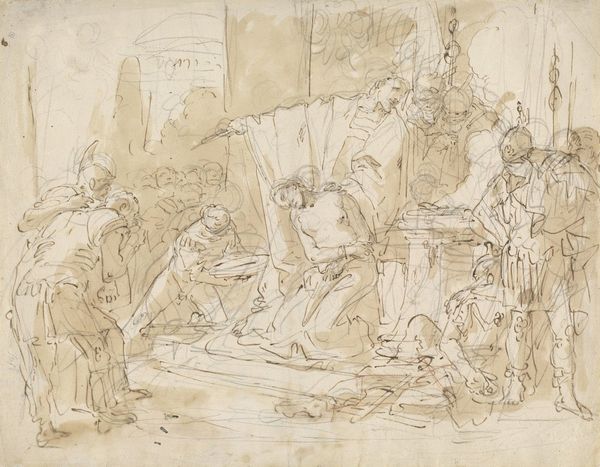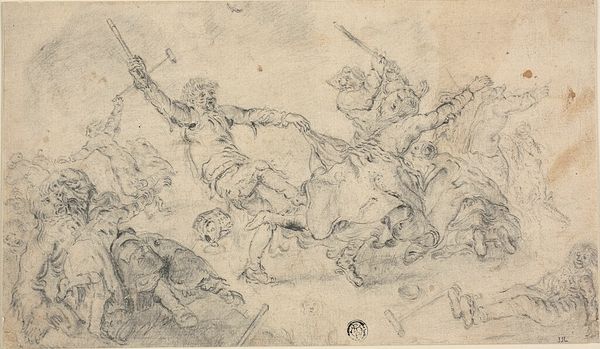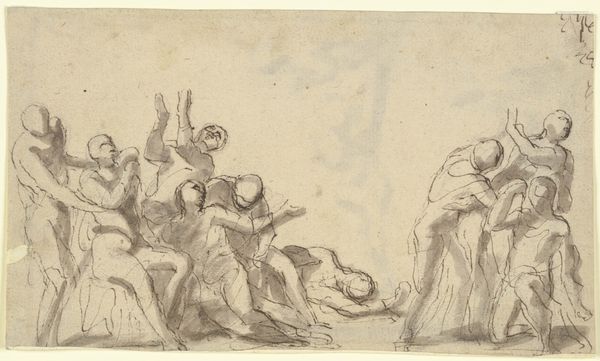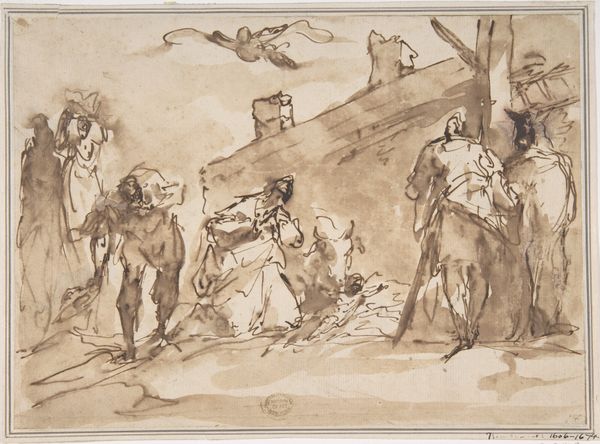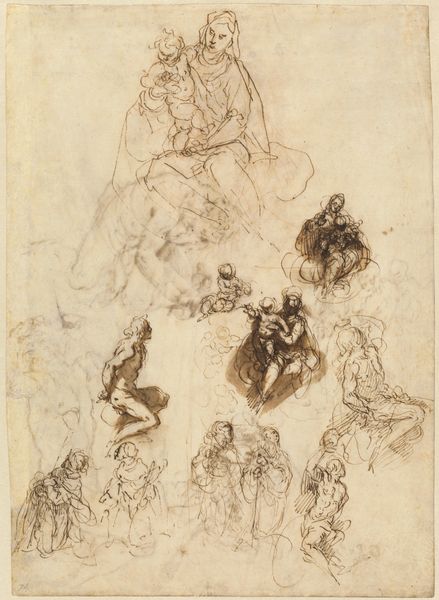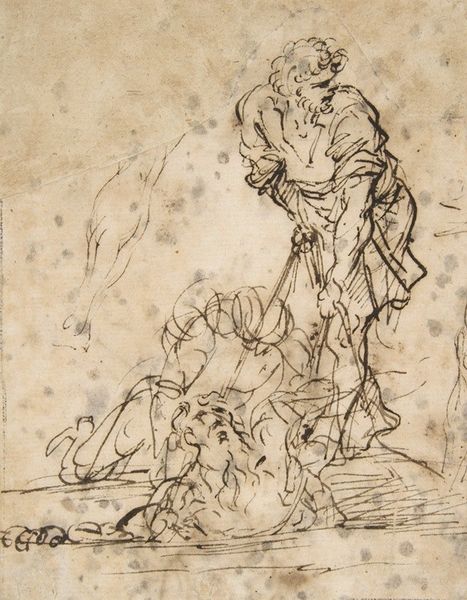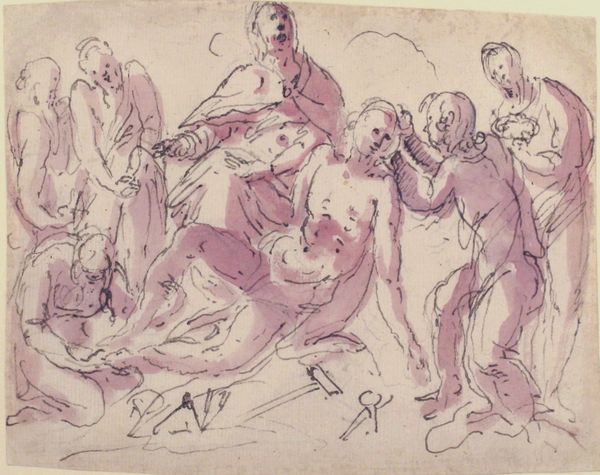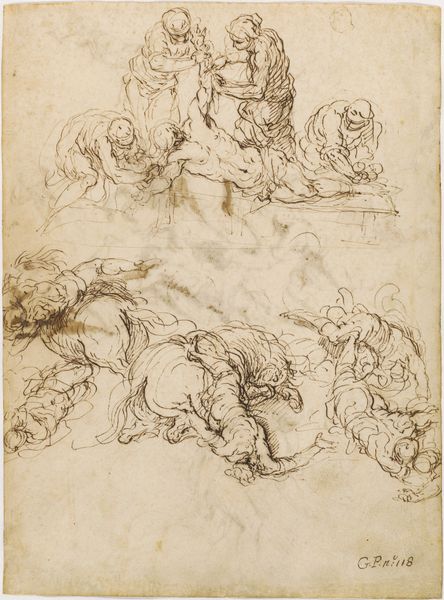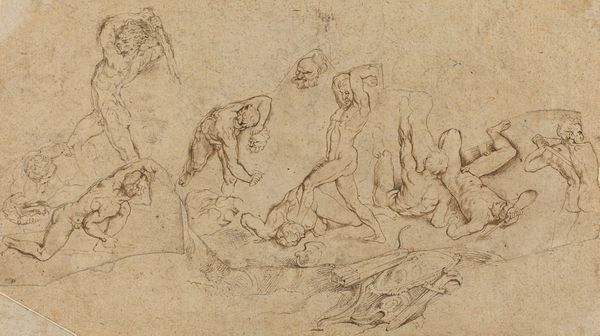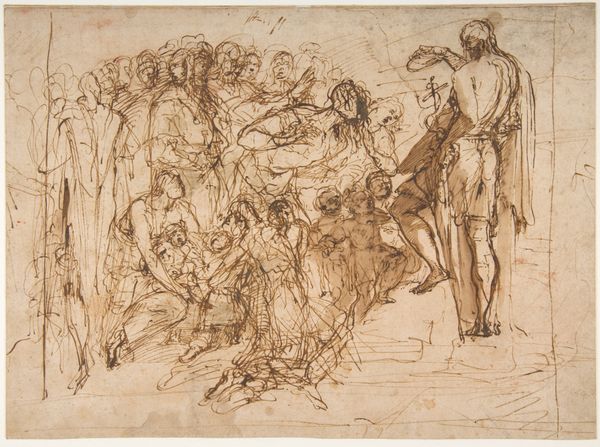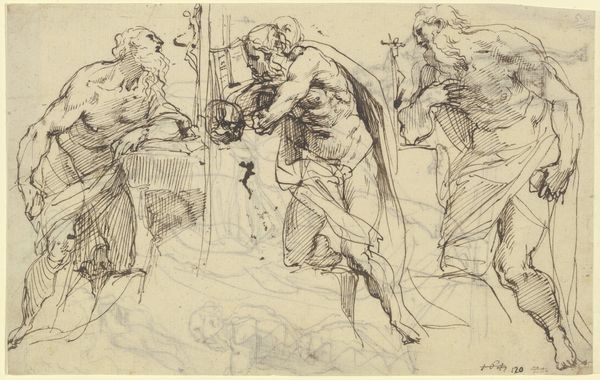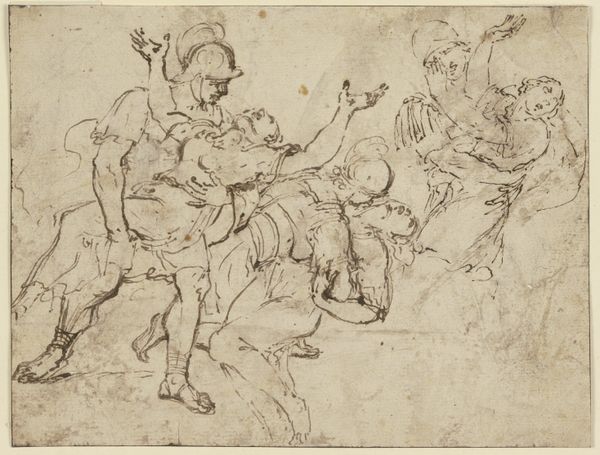
drawing, ink
#
drawing
#
narrative-art
#
baroque
#
ink painting
#
figuration
#
ink
Copyright: Public Domain: Artvee
Curator: This dynamic ink drawing is entitled "The Raising of Lazarus" and it is attributed to Salvator Rosa, a prominent Baroque artist who lived between 1615 and 1673. Editor: It strikes me as unfinished, almost a chaotic jumble of figures at first glance. There's a lot of energy, but the composition feels rather unsettling. Curator: Rosa was celebrated for his theatrical compositions. His embrace of dynamic, often unsettling, scenes resonated with a public hungry for strong emotion in art, particularly within religious subjects which reinforced institutional messaging. Editor: Yes, theatrical is a good word for it. I am struck by the repetition of upraised hands – three, four, maybe even five figures seem to gesture upwards. It creates a powerful directional force in the piece, guiding the viewer's eye. The shading, too, is quite dramatic. Curator: Indeed, the Baroque embraced dynamism to showcase religious miracles, thus making this representation incredibly vital to religious interpretation at the time. This period experienced turbulent social shifts. Religion was a potent force and the image, and representations like it, became potent means of communication. Editor: While technically impressive, there's a certain lack of clarity. The figures blend into each other. Perhaps this reflects the overwhelming nature of the miracle itself. The line work varies from delicate to bold. This variability adds a certain depth and dimension, but it also, to my eye, causes a little unease. Curator: Rosa actively cultivated a public persona that challenged established academic traditions. He positioned himself as a rebel against the art establishment and created a strong appeal that reinforced societal shifts away from older art institutions. The seeming lack of finish added to the appeal that artistic inspiration mattered above all. Editor: So, by disrupting the formal conventions of the time, Rosa's style effectively echoed and fueled cultural rebelliousness? Curator: Precisely. In the tumult of society, an artist like Rosa served as a mirror reflecting shifts in artistic freedom, or freedoms of all kinds for that matter, thereby giving permission for societal self-evaluation. Editor: Well, considering that, one can see how such potent art affected contemporary viewers and influenced future artistic endeavors, creating lasting ripples felt to the current moment. The drawing, initially jarring, becomes an illuminating mirror.
Comments
No comments
Be the first to comment and join the conversation on the ultimate creative platform.
